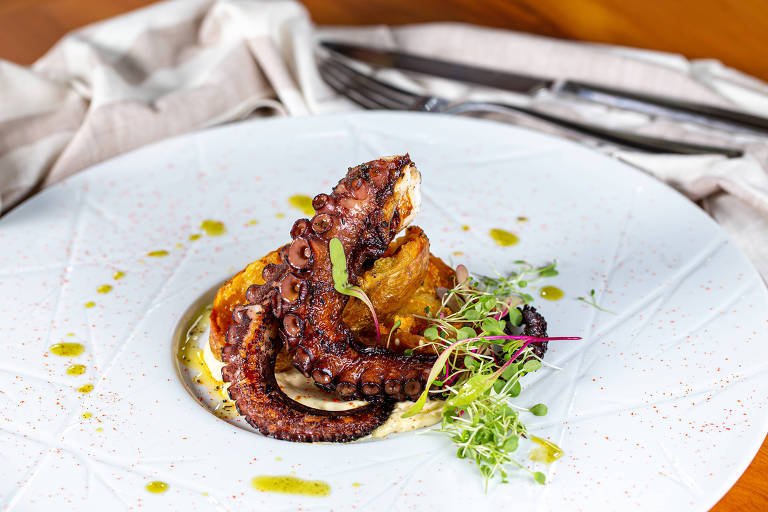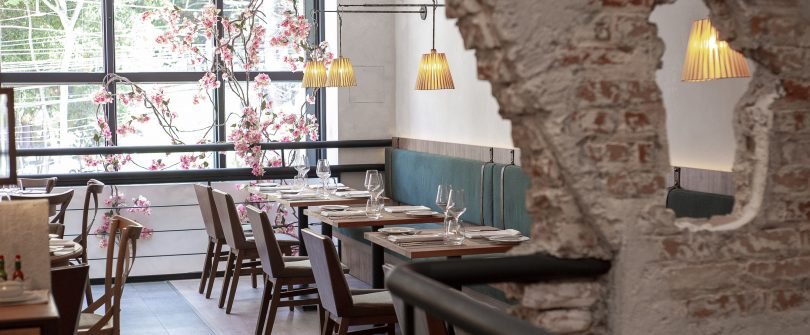Business Case
How Prototyping Saved a Restaurant
A $1.000 experiment plan that led to a threefold in revenue
The Challenge:
A premium restaurant that wasn't thriving
Imagine a restaurant with delicious food, a prime location, and impeccable service… yet struggling to fill tables. Why? Because even the best offerings can’t compensate for a CX blind spot.
Here’s how prototyping saved Vicoboim, an Italian gem in São Paulo, from failure.



The Methodology:
Double Diamond for user-centric insights
-
This phase involved conducting in-depth interviews with different customer segments, observing customer behavior, and performing covert customer evaluations. The goal was to uncover insights about why the restaurant wasn't thriving.
-
Based on the research, we synthesized key insights and identified the core problem: the restaurant’s lack of visibility. The findings showed that the physical facade made it difficult for potential customers to recognize Vicoboim as a restaurant.
-
Instead of immediately opting for an expensive redesign without being able to access its success potential, we brainstormed and prototyped small interventions to test different ways to enhance visibility.
-
The implemented solutions resulted in an immediate 20% increase in foot traffic. Encouraged by these results, the client decided to invest in a full renovation during the holiday period. After reopening, the restaurant saw a threefold increase in revenue, proving the effectiveness of the iterative, user-centered approach.
Understanding from the user's point of view
To uncover the root cause of this issue, we conducted in-depth interviews with three key user segments from the neighborhood:
Frequent customers who loved the restaurant and returned regularly.
One-time visitors who dined there once but never returned.
Potential customers who lived nearby but had never stepped inside.
Additionally, we carried out several mystery audits to experience the journey from a first-time visitor's perspective.
The Problem: Hidden in Plain Sight
Vicoboim, nestled in São Paulo’s upscale Higienópolis district, had all the ingredients for success—except one: visibility.
Through our research, we discovered that, despite its prime location, the restaurant's front design created a significant barrier to attracting walk-ins:
A closed door and small window made passersby mistake it for a private residence or assume it was closed.
This issue was further amplified by the fact that it was situated in a residential neighborhood, where commercial visibility was less intuitive.
Ideal Solution
vs. Prototyping
From a strategic perspective, the best solution would have been an architectural redesign to create a more open and inviting facade. However, a structural renovation would require a large financial investment and take months to implement. And that scared the client.
So, we at Triad challenged ourselves and asked “What if we test smaller, faster, and cheaper first?”
Instead of going full mode on renovation, we opted for a lean prototyping approach to test solutions quickly and affordably before committing to major renovations. With a budget of just $1.000, we implemented these low-cost interventions in a progressive plan:
-

Sidewalk tables
($0)
Placed table outside to create a more inviting atmosphere and signal activity. That resonated with what customers said about loving that Higienópolis was still a district you could walk in.
-

Awning remotion
($0)
The awning was too low and interfered with what customers could see of the restaurant's front. It blended into the urban landscape (light posts and wires), making the restaurant even more invisible and less inviting.
-

Window-to-counter transformation
($210)
Converted the closed window into an open counter with a direct view of the street, making the restaurant's interior more visible and approachable. That way, customers could sit there and become living advertising while maintaining the restaurants's cozy atmosphere.
-

New logo sign
($775)
The previous facade relied solely on the restaurant's name displayed on the awning and a small metal-lettered logo, which made it difficult for passersby to recognize it as a dining establishment. As an aesthetically pleasing and functional solution, we implemented the restaurant's logo made with elegant wooden letters with indirect lighting. It was installed high enough to make it visible from across the street and illuminate the front at night.
The Results:
From Visibility to Profitability
The impact of these simple interventions was immediate and remarkable. Within two months, Vicoboim saw a 20% increase in foot traffic, which gave the client enough confidence to invest further in a full facade renovation during the holiday period, minimizing business disruptions.
Once the renovations were completed and the restaurant reopened, the impact exceeded expectations. Following the reopening, revenue tripled within the next four months. What had previously been considered a 'really good month' became the restaurant's new normal.
Customers who had previously ignored the establishment began stopping by out of curiosity, and the increased visibility solidified Vicoboim as a neighborhood favorite. Many locals mentioned they had walked past the restaurant for months without realizing what it was. The tables outside encouraged spontaneous visits and provided clarity about the restaurant's offerings.
Why Prototyping Wins
-
Desirability
Tested real-time customer reactions before costly commitments.
-
Viability
Minimal investment (under $1.000) to justify a $60k renovation
-
Feasibility
Solutions implemented in days, not months.
Key Takeaways: Prototyping as a CX Strategy
Small Changes Can Drive Big Results: Instead of waiting for a perfect solution, small-scale experiments can validate hypotheses quickly and affordably.
Understand the User's Perspective: In-depth interviews and covert customer evaluation visits revealed insights that wouldn't have been obvious from an internal viewpoint.
Prototype Before You Invest: Before committing to large investments, test solutions in real-life conditions to ensure they effectively solve the problem.
For Vicoboim, this experiment not only boosted revenue but also provided concrete evidence that investing in a permanent redesign of the facade would be worth the effort. By applying CX-driven prototyping, this restaurant was finally able to shine. However, it's important to note that changing the front alone wasn’t a magic fix for all challenges. What it did provide was enough visibility and profitability to allow Vicoboim to continue improving its services, leading to a continuous, user-centered approach to business growth.



